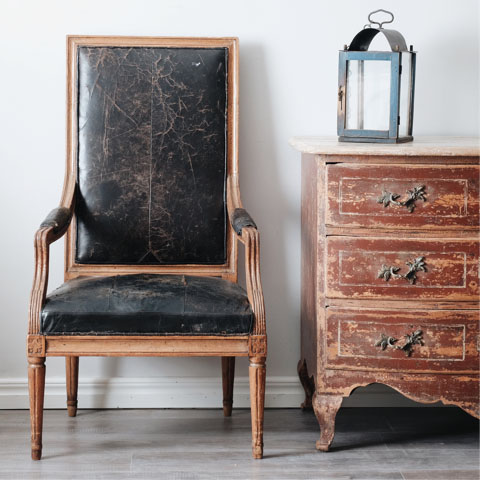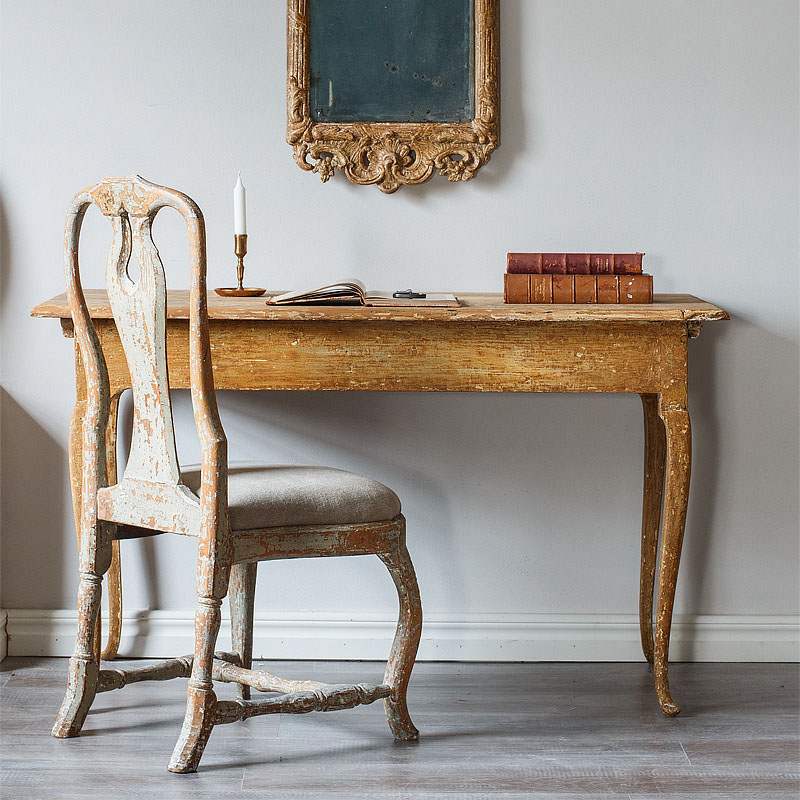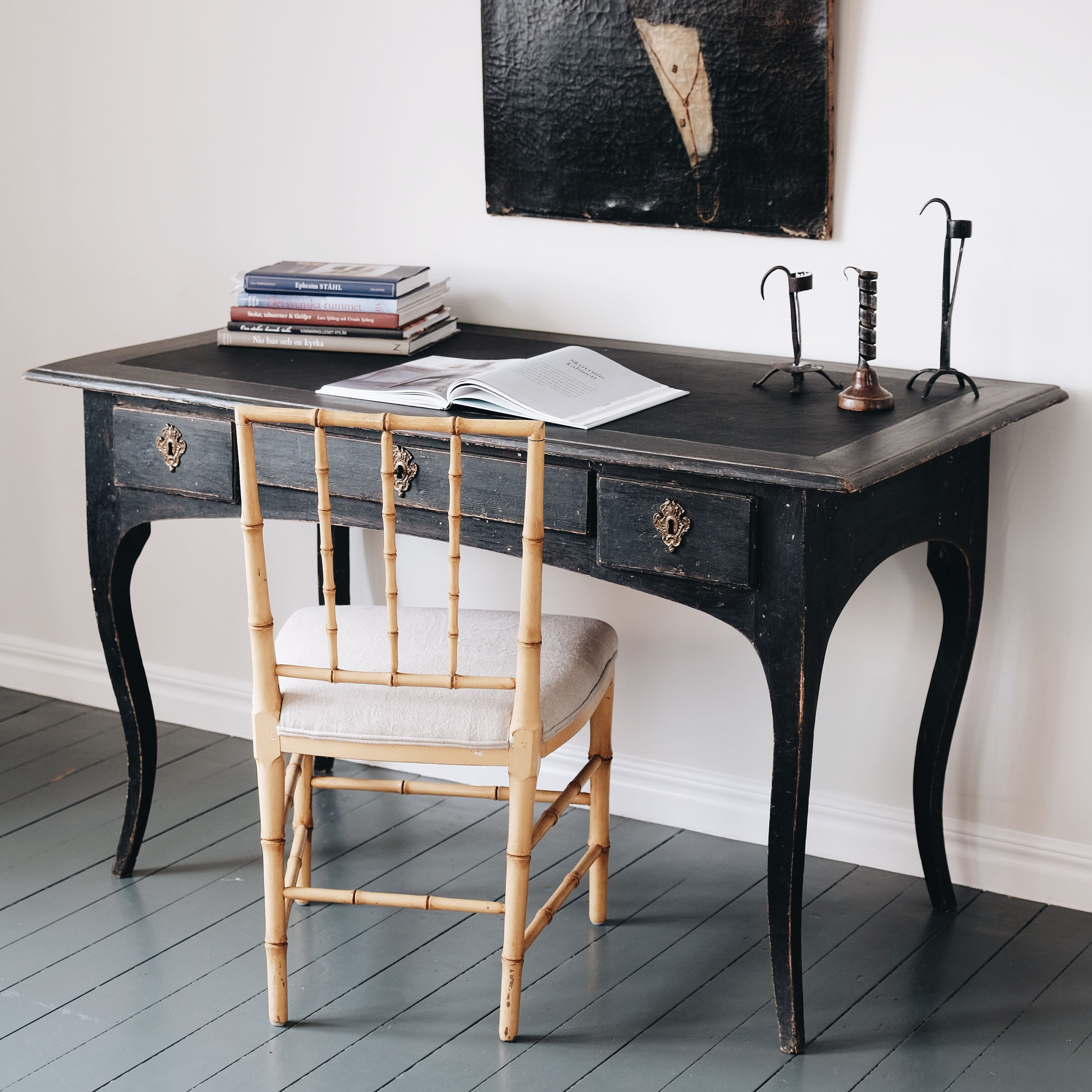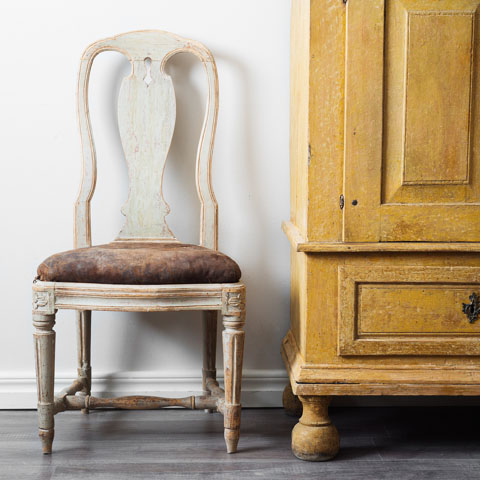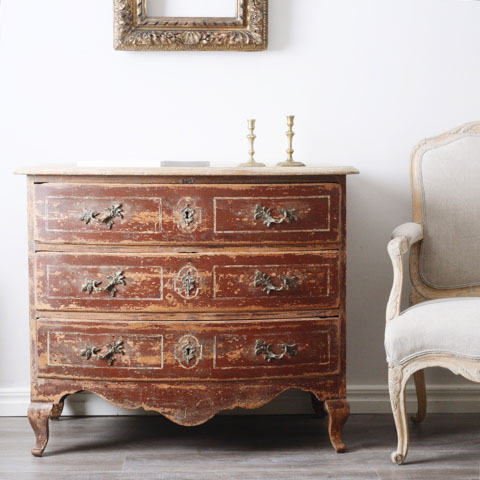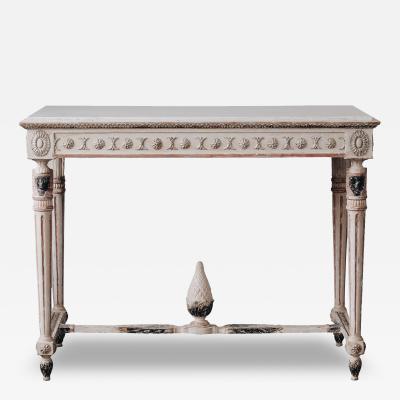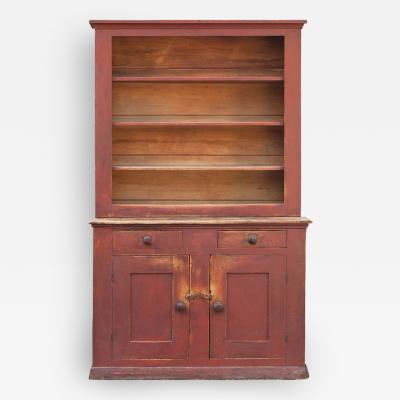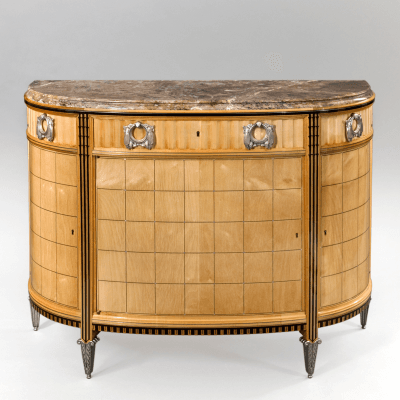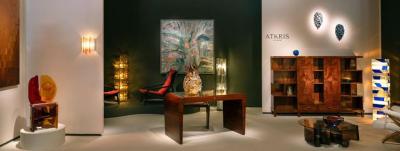Daniel & Cristina of D.Larsson Discuss the Singular Beauty of Swedish Antique Furniture
The 18th century is generally regarded as the golden age of antique Swedish furniture. During the first half of the century a significant amount of furniture was imported, mainly from England. In 1731, the Swedish government decided to ban the importation of furniture in order to support the domestic carpenters and carvers. Consequently, indigenous furniture making underwent unprecedented development. Never before or since have the artisans been so prolific and skillful. This was the period when furniture design and construction evolved into fine art.
The Gustavian expression (1775 - 1810) is typically Swedish as seen in this buffet where the refinement and unpretentious elegance are evident in the small tapered feet, canted corners, restrained carved details, classical references, and balanced proportions. Swedish furniture was often painted to imitate the grain and character of a variety of exotic woods like mahogany, which had to be imported and was therefore reserved for an elite who were centered mainly around the Stockholm area. This tradition persisted during the centuries, which is why most pieces have been painted and repainted many times throughout their history.
The process of dry scraping furniture to reveal the original layers of paint has become a skilled tradition. Despite being time consuming, it is an essential process to protect the crusty original surface and take the piece back to the moment in time just before it was first re-painted In most cases the patination and palette of the original "skin" are preserved. This technique simultaneously brings to life a new object with its own individual appeal, texture, and integrity. It is an absolutely magical process.
This early 19th-century Swedish Gustavian high back arm chair is faux painted to look like mahogany, the decorating technique used to imitate exotic or hard-to-find wood varieties. This is an unusual chair with its high back and sparse decoration, lending to the possibility it was made for a government office.
The diversity and subtleties of 18th-century Swedish painted furniture never cease to amaze Cristina and me. Just recently we discovered a remarkably well designed rococo table retaining its original bird's-egg blue colour. It’s a fabulous example of the Swedish interpretation of the rococo style: a gently curving profile to the legs and apron, sparse on the carvings and yet elegant. Its sophistication, simple lines, and pastel colours combine to make furnishings like this mix perfectly with modern furniture and work well in a wide variety of spaces, from contemporary to traditional. Open an interior design magazine anywhere in the world and you are likely to find one or two Swedish pieces featured, often as a focal point in a room.
This provincial rococo table benefits from lovely proportions with gracefully curved cabriole legs; the form is heightened by the original yellow colour. We also like to mix the informal with the formal, like this beautiful rococo mirror placed above the more restrained lines of the table.
When thinking about Swedish antique painted furniture, black coloured pieces do not immediately come to mind. Pieces that were painted black were, however, quite popular during the 18th century, particularly for desks and writing tables. We love the black as it helps to define and silhouette the architectural qualities and lends a "masculinity" without being too heavy. Authentic examples with original paint have become so popular that they are increasingly rare. The demand continues to increase and, consequently, so do the prices. Investing in such examples will be rewarding in many ways. It’s fundamental to keep in mind that with Swedish painted furniture market prizes original or scraped to the original colour and not pristine new paintwork.
A transitional chair with Rococo and Gustavian elements that have been scraped to reveal the original colour. The rococo back, with its curved crest, stiles, and elegant baluster splat, is combined with turned legs indicative of the Gustavian period.
This late baroque commode retains its original paint. This piece has never been over painted or scraped, which adds to its desirability, rarity, and value.
What we find fascinating are the transitional pieces since they illustrate changing tastes in fashion. Furniture from the early 18th century, referred to as late Baroque, is made in a transitional style with its very own distinguished expression. Austere and slender with sparse decoration, the design elements combine baroque and rococo aesthetics. Such furniture is a relief from the dark and heavy fully baroque furniture currently not very popular and, as a result, underpriced. You can find a huge cabinet with amazing carvings and craftsmanship for relatively little money compared to what they used to cost. These heavy pieces are more challenging to place today but, in the right setting, can make a powerful statement and should not be ignored.
Many examples of Swedish furniture currently available on the "antiques" market have been comprehensively rebuilt and restored, often repainted in popular pastel colours. Sadly, some of these created or "style" pieces are sold as period. It is paramount to pay attention and look closely. A good way to start is to carefully read the piece’s description and ask questions, read, and visit museums so that you can learn. If it looks too good to be true, it's because it probably is too good to be true; that’s when you need to consider the construction and surface very carefully and work with a respected expert.
ABOUT D.LARSSON
D.Larsson Interiör & Antikhandel is run by husband and wife team Daniel & Cristina Larsson. The Larssons are discerning and respected specialists in predominantly 18th - 19th century Swedish painted furniture and decorative arts. They have a reputation for sourcing fine quality examples, individually selected for their design, integrity and original historic surfaces. In recent years D.LARSSON have established an enviable international reputation for quality and integrity, while establishing a broad clientele and enjoying the privilege of working with a selective group of Private Collectors, a handful of the world’s top International Dealers and some of the world’s leading Architects and Interior Designers. Clients understand that because Daniel and Cristina live and work in Sweden they are perfectly situated to source and select the best available examples, as they come fresh on to the market. Based in Helsingborg, Sweden the showroom is on the street level of an historic mid-19th century building, located in the oldest part of Helsingborg. D.Larsson has become an established destination store and one of the most significant antique shops in Sweden. D.LARSSON Interiör & Antikhandel is a member of LAPADA, the largest professional Association of Art and Antique Dealers in the UK, endorsing their international status and guaranteeing they honour the strict Code of Practice upheld by LAPADA, which gives further confidence to existing and potential clients alike. Click here to see 18th-19th century fine Swedish antiques from D.Larrson.
















